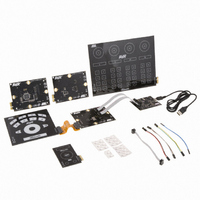ATQT600 Atmel, ATQT600 Datasheet - Page 42

ATQT600
Manufacturer Part Number
ATQT600
Description
KIT EVAL TOUCH FOR QT600
Manufacturer
Atmel
Series
QTouch™r
Specifications of ATQT600
Sensor Type
Touch Screen
Interface
USB
Embedded
Yes, Other
Utilized Ic / Part
ATtiny88, ATmega324PA, ATxmega128A1
Processor To Be Evaluated
ATtiny88, ATmega324, ATxmega128
Data Bus Width
8 bit, 16 bit
Interface Type
USB
Maximum Operating Temperature
+ 85 C
Minimum Operating Temperature
- 40 C
Operating Supply Voltage
1.6 V to 3.6 V
Silicon Manufacturer
Atmel
Kit Application Type
Sensor
Application Sub Type
Touch Sensor
Kit Contents
USB Bridge, MCU Cards, Touchpad Cards
Svhc
No SVHC (15-Dec-2010)
Mcu Supported Families
ATtiny88,
Rohs Compliant
Yes
Lead Free Status / RoHS Status
Lead free / RoHS Compliant
Voltage - Supply
-
Sensitivity
-
Sensing Range
-
Lead Free Status / Rohs Status
Lead free / RoHS Compliant
Available stocks
Company
Part Number
Manufacturer
Quantity
Price
Company:
Part Number:
ATQT600
Manufacturer:
Atmel
Quantity:
135
10620D–AT42–04/09
Mutual-capacitance Zero-dimensional Sensors
4.3
4.3.1
4.3.2
4-10
Non-Planar Construction
Introduction
Flooded-X Two-layer Method
It is often desirable to form electrodes on the inner surface of a panel that is not part of the main
capacitive touch circuit board. This technique can be used with a mutual-capacitance type sensor,
typically using a spring as part of the sensor (see
other methods are possible (see
little effect on the field distribution until a touch is made, at which point a percentage of the field is
deflected through the panel vertically.
The methods for interconnection are tightly coupled with the method of construction. The rules for the
interconnecting traces are identical to those already described in
page
traces is no longer near to touch.
The flooded-X two-layer method distributes the X and Y electrodes across two layers of a substrate. This
style has some great advantages in terms of sensitivity for small keys, and has some good intrinsic noise
rejecting capabilities. Another useful property is that because the X electrode completely shields the Y
electrode from behind, the sensor is not touch-sensitive from behind. The field behavior is similar to that
mentioned above.
Figure 4-10. Flooded-X Two-layer Method
4-7. However, some of the constraints can be relaxed because the substrate used to route the
2 mm
4 mm Minimum
Substrate
Section 4.3.2
Grid Infill, 4 mm
Where Possible
0.1 – 0.5 mm Wide,
Subject To RC
Time Constant
Front Panel
Y (Nearest
To Touch)
X Flood
and
Section 4.3.3 “Spring Method” on page
Section 4.3.4 on page
Substrate
Less Than 4 mm
Open Spaces
Section 4.2.4 “Interconnection” on
4-13). The overlying panel has
Touch Sensors Design Guide
t2,Er2
t1,Er1
4-12), although













